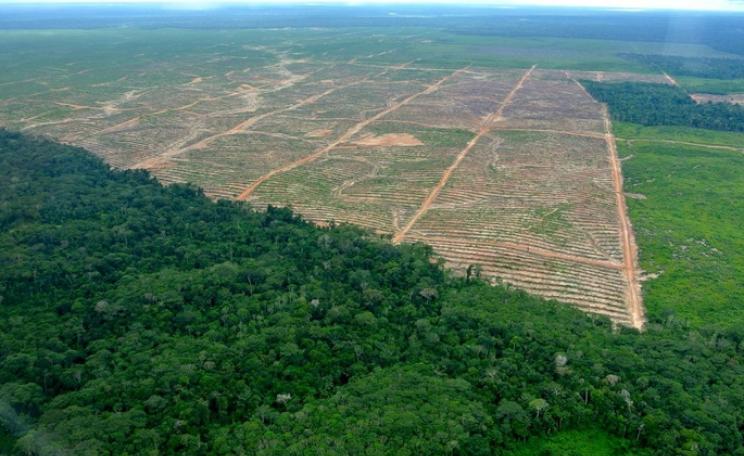Some species are so efficient they produce more biodiesel than most plants.
Microalgae use sunshine to convert water and carbon dioxide (CO2) – the gas emitted by burning fossil fuels – into oils and other useful products. Some species of microalgae contain high levels of these oils, which can be extracted from the algae and used to produce biofuels, such as biodiesel. Indeed, some species are so efficient at making oil that they can produce greater volumes of biodiesel than most plants.
According to oil giants ExxonMobil, microalgae can produce 2,000 gallons of biodiesel each year from just one hectare of land, which is over three times as much as palm and forty times that of soya. And the best way to capture the oil stored in the microalgae is by farming.
What do you think? Comment here
Farmed microalgae sunbathe in large, open ponds or closed bioreactors – these are long tubes or flat panels filled with water, designed to maximise the amount of available light. Alternatively, some microalgae species can grow completely in the dark if fed with sugar. Consequently, farmed microalgae can be grown on land unsuitable for food production, unlike many other sources of biofuel.
Carbon footprint
At the moment, most of the world’s algal biofuel production remains at the demonstration scale and there is very little commercial activity. This is because biodiesel is relatively cheap to buy, but the technology needed to grow the microalgae and extract the oils is expensive. As a result, the financial margins are currently small.
Growing microalgae in bioreactors can also carry a large carbon footprint, because the algae require constant mixing, and have a high demand for added nutrients. Harvesting and extracting the oil from the algae is also very energy intensive. Open ponds tend to be cheaper and have a better carbon footprint, but the water evaporates so must be replaced regularly. There is also a risk of contamination with unwanted algal strains. Despite these challenges, interest in algal biofuel remains high.
Much of this interest has come from countries like the USA, where there is plenty of sunshine, and considerable public and private sector investment. For example, in July 2010 San Francisco-based energy producers Solazyme delivered 1,500 gallons of algae-made jet fuel to the US Navy, and have since gone on to win a Navy contract for a further 150,000 gallons of algal biofuel.
Given the UK climate and constraints on land availability, microalgae’s role in mitigating climate change is likely to be different here than it is elsewhere. The UK is not renowned for its sunshine and on average receives just half as much as the USA. The most feasible option emerging is to integrate fuel and energy production with microalgae’s other uses.
Some species are so efficient they produce more biodiesel than most plants.
Microalgae have been successfully used on a small-scale to produce high-value products, such as cosmetic ingredients and nutritional supplements. In addition, they could be used to clean nutrient-rich waste water or capture CO2 from power producers.
Green whisky
For example, the Glenturret Distillery in Perthshire – home to The Famous Grouse Whisky – percolate CO2 made during the whisky distillation through a microalgae bioreactor. Each tonne of microalgae absorbs two tonnes of CO2. Scottish Bioenergy, who run the project, sell the microalgae as high value, protein-rich food for fisheries. In the future, they plan to use the algae to produce other high value products and feed the residues to an anaerobic digester.
Anaerobic digestion is the process where bacteria and other micro-organisms break down plant and animal material in the absence of air. The product of anaerobic digestion is a combustible gas, which Scottish Bioenergy plan to use to generate renewable heat and power for the distillery. Anaerobic digestion is a wet process so there is no need for water removal, reducing the carbon footprint associated with harvesting the algae.
'In the short term, microalgae will be made into high value products, but increasingly are expected to help in the remediation of wastes,' says Dr Claire Smith, algae lead for the NNFCC – the UK’s National Centre for biorenewable fuels, materials and technologies – who I too work for.
'Energy opportunities will develop through using algal residues but are likely to be smaller, more local solutions, rather than the larger scale facilities we see abroad.'
Microalgae offer a real solution to the challenges of climate change and can provide additional environmental benefits. The opportunities for UK companies to develop this budding technology are tremendous, but so remain the challenges.
Dr Matthew Aylott is a staff writer with the National Non-Food Crops Centre, which receives funding from The Department of Energy and Climate Change (DECC) and industry sponsorship.
| READ MORE... | |
 |
NEWS UN biodiversity panel 'a dream of many scientists' A UN panel similar to the one for climate change has been given the go-ahead by world leaders with an admission they had failed to heed scientific warnings about biodiversity loss |
 |
NEWS Do you want next generation biofuels? Have your say New consultation to look at whether the next generation of biofuels will be more environmentally-sustainable than current food crop varieties |
 |
NEWS Jatropha better suited to local communities, not biofuel markets Study predicts the yields of jatropha will fall in the next decade and that it is better suited to community-level, rather than industrial-scale, production for the biofuel market |
 |
GREEN LIVING 12 shocking facts about your food PHOTO GALLERY: A pocket-sized book highlights some of the super-sized problems associated with the way we feed ourselves |
 |
NEWS ANALYSIS Biomass Britain: do fields of energy crops spell an end to grazing livestock? A new vision to replace our grazing land with energy crops will help reduce greenhouse gas emissions, but many are unwilling to embrace its suggestions for our future diet and countryside |





